Molecular Gastronomy 101: Biology Basics - Part 1
Published by nika on Monday, July 03, 2006 at 5:19 PM.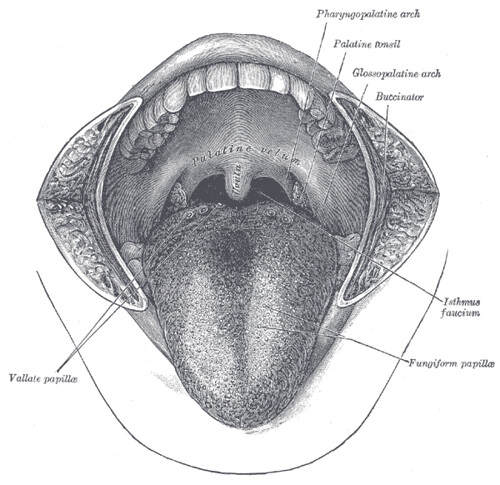
To understand the Molecular Gastronomy "movement" its best to start from First Principles. To begin, its useful to re-introduce ourselves with the physiological basis of taste. This means - let us examine the organs that higher vertebrates (specifically we humans) use to taste what we eat.
Although we all have mouths and noses, it is easy to take them for granted and to not be aware of their complexity.
The diagram above shows one view of a mouth and tongue. On the surface of the tongue, as you well know from touching your own, is a whole rugged landscape of bumps and crevasses.
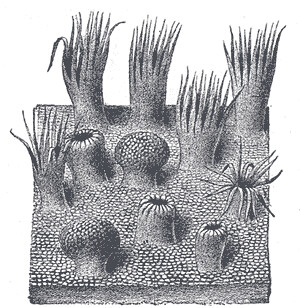
Therein are a wide variety of structures, the one most relevant to this discussion are the gustatory calyculi or taste buds.
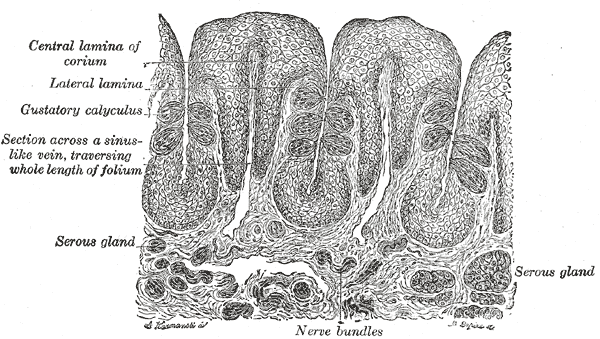
These are complex multisensor units that are wired into the nerves that innervate the tongue.
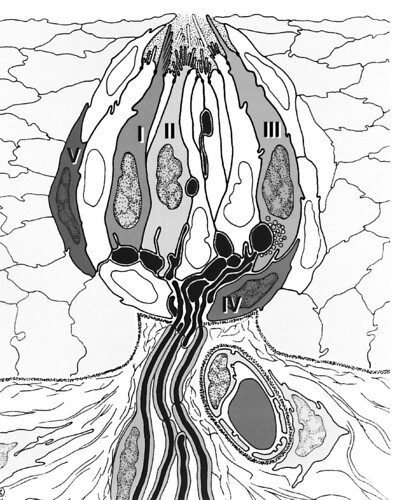
These are the basic quantum or unit of taste on our tongue (and, when developing in the womb, on the lining of the oral cavity).
We are wired to detect 5 general classes of "flavors": sweet, bitter, salty, sour, and glutamic species (an amino acid) also called umami.
There are many misconceptions regarding the regions of taste sensation in the mouth. You have likely seen those diagrams where sweet is on the tip of the tongue, bitter at the back, sour towards the middle, and salty along the edges.
In fact, each of these gustatory buds is capable of detecting all five "flavors".
I will discuss the molecular biology of taste or chemoreception in the next post.
Beyond the chemicals or "tastants" that we detect in the food that comes in contact with our tongue and inner cheeks, we also use olfaction (smelling) to appreciate and evaluate the food or drink we are enjoying.
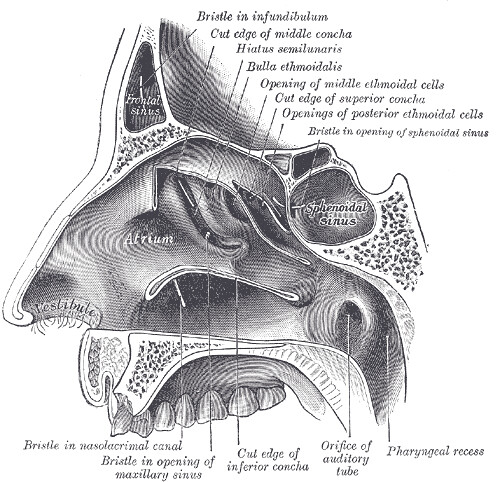
Molecular components are also involved in that process and will be discussed in a future post.
Thus, tasting is not as simple as one might think.
The next question should be, how does that taste bud experience flavor?
My next post will discuss the concept of receptors and how the taste bud translates exposure to certain chemicals in our food into a neural impulse that we integrate in our minds as a flavor.
Stay tuned!
Books on Molecular Gastronomy:
Related Posts:
- Molecular Gastronomy for the masses? (A Rant)
- Molecular Gastronomy 101: Part 1 - The Nose and receptors
- Molecular Gastronomy 101: Part 2 - The Nose and receptors
Technorati taggage:
Molecular, Gastronomy, Molecular Gastronomy, food, culinary, cooking, science, food science, taste, chemoreception, 101, nose, tongue, Gray’s Anatomy, oral, mouth, molecular biology.

Links to this post